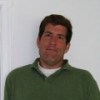I've been collecting a bunch of little news squibs from the IoP and the APS over the last week or so, and I keep saying that I'm going to do a nice long post explaining each of the experiments. And my actual job keeps eating my life, what with candidate interviews, committee meetings, class prep, and lab set-up. And, of course, those news items are becoming less current with every passing day...
In lieu of a lengthy and detailed explanation of each, then, here's a short list of physics stories that have caught my eye. If there's a great clamor for a more detailed explanation of any of these, I'll try to put one together over the weekend. For the moment, I have to go do a lab about the boring old photo-electric effect, while you can click through to read about single photon data storage, new advances in quantum computing, and signals travelling backwards in time (maybe)...
- We'll start with a slightly garbled press release and a much clearer news story regarding an experiment at Rochester using "slow light" to store image information with single photons. The description is a little confusing, because the images shown are actually the sum of many single-photon detections-- a single photon does not make the "U" pattern shown in the picture. At least, I don't think it does...
- Coherence* has links to two interesting experiments, the first of which is a new development in linear optics quantum computation. The idea here is that they've run some quantum algorithms in a system using nothing but beamsplitters, polarizers, and waveplates, and they've implemented a "feed-forward" system to speed up the results. It sounds cool, but I'll need to take a look at the actual paper (in Nature, who are bastards about online access) for this one, because the press summary is hopeless.
- Also via that Coherence* post, a proposed experiment to look for "retrocausailty" by sending correlated photons through two double-slit set-ups at different times. The idea is to have one photon of an entangled pair hit a detector that will either show a particle pattern or a wave pattern, depending on its position, and show that the other particle of the pair produces the same result. The twist is that the second particle hits first-- the plan is to delay the measurement that makes the particle/ wave determination until after the measurement of the correlated photon, and see what happens. According to the "Transactional Interpretation" favored by John Cramer, there should be a signal travelling backwards in time to determine the result of the earlier measurement, and this might be a way to test that.
- Just for completeness, let me note a Physics Web news story about an experiment I mentioned here a while back, looking at the quantum statistics of atoms. This is great stuff.

The quantum statistics thing looks nice.
I've just had a (very) quick skim through the Zeilinger paper, and while nice, it isn't as nice as it sounds, as you still need to generate a cluster state to begin with, which is hard.
A prof demo'd his new time machine for his students. Placing a cigar in the little gizmo he sent it five minutes forward into the future. The cigar disappeared and, five minutes later, reappeared. He removed it. Shortly thereafter an identical second cigar appeared.
Student, "What is that?"
Prof, "Five minutes from now I will send this cigar five minutes back into the past. Here it is!"
Student, "Why must you send it back? It can't not arrive if you do nothing - it's already here! Remove it from the time machine. Will the second cigar vanish in five minutes?"
Prof, "Hmmm... interesting experiment."
The prof removed the "second" cigar from his time machine and at the apppointed time did not send it back five minutes into the past. The cigar persisted. Intolerant of contradiction, the rest of the universe vanished.
There are no detectable technological civilizations within at least 50 lightyears' radius of Earth, or 524,000 cubic lightyears. Might there be an accessible boojum?
The first news story is about my quantum physics professors work :) He came into class yesterday, and said something to the effect of "Many of you have probably seen my research posted up in blogs. Here are all the things that people didn't understand properly..." It was an interesting class.